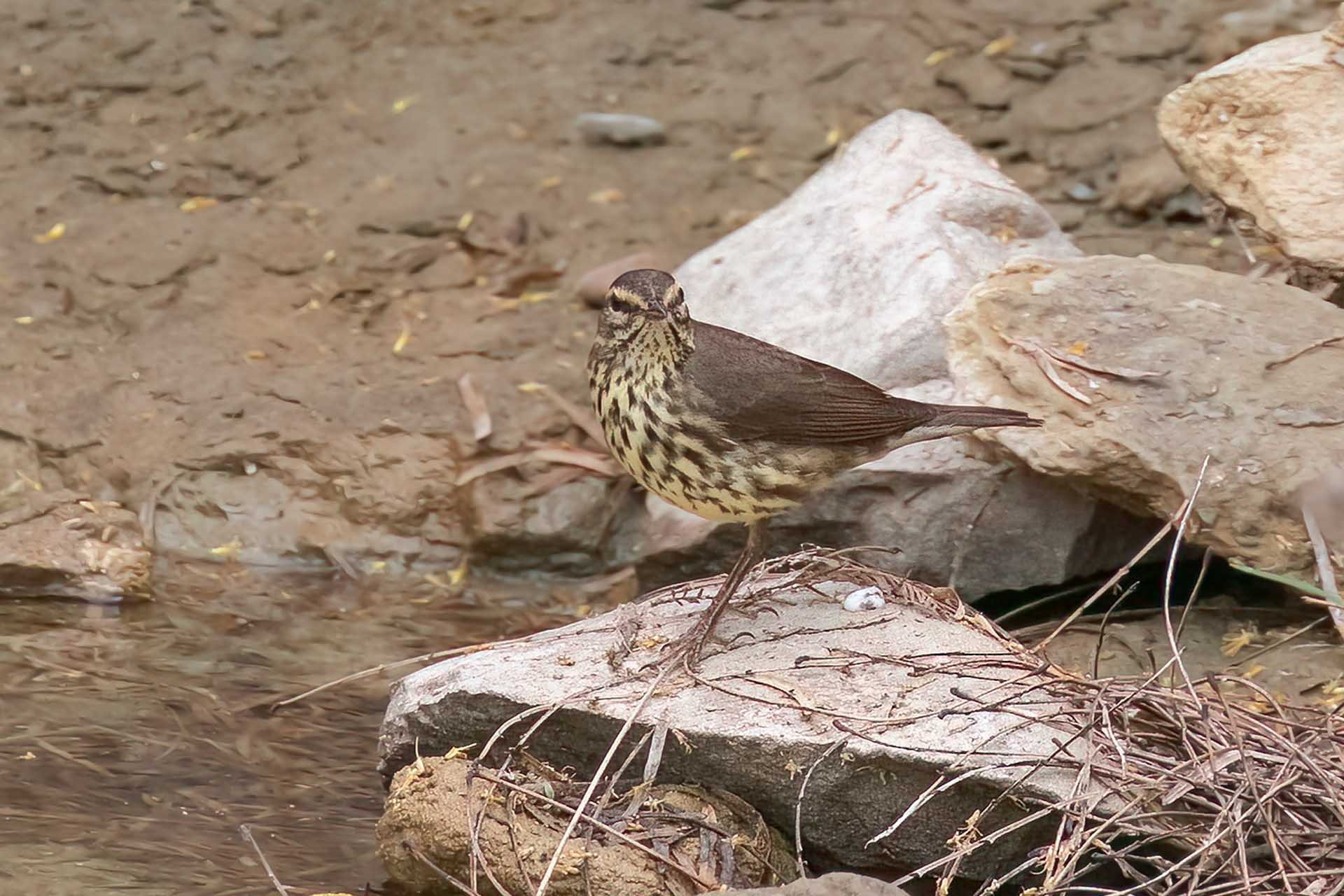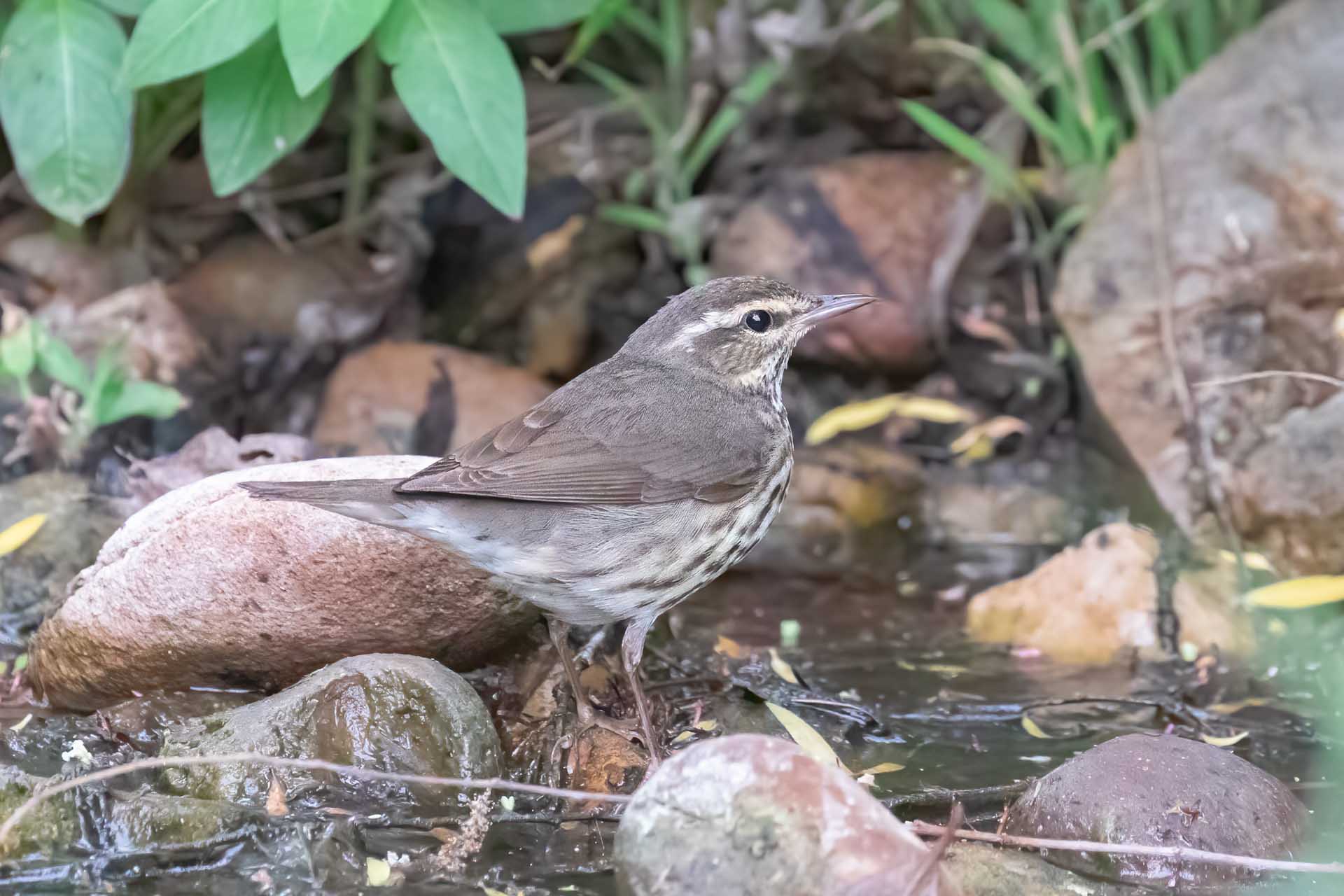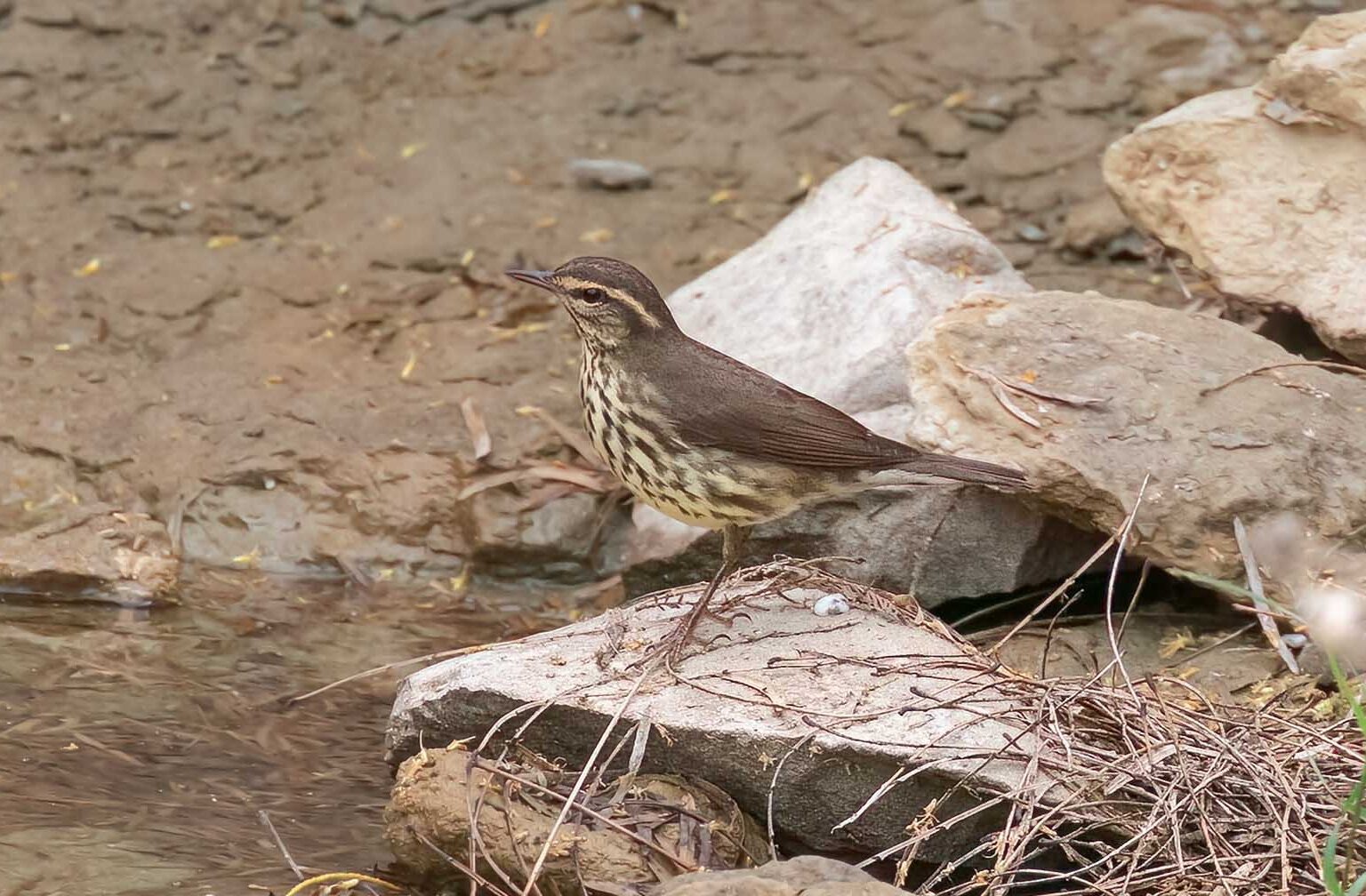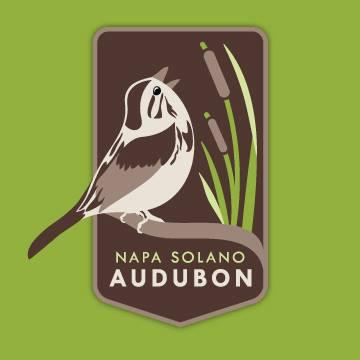Bird of the Week: Northern Waterthrush

Northern Waterthrush – an Early Fall Migrant
The Northern Waterthrush breeds in Canada and Alaska, and although are more common in the Eastern U.S. are often seen during their Spring and Fall Migration in Coastal California. They frequent streams and willow thickets along the coast and are often found by their loud metallic chip note. Both the Northern and Louisiana Waterthrush have been seen in many locations in our area of the state during Fall Migration when they often stay feeding along a creek bed for a number of days or even weeks before continuing on their migration to Central America. Northern Waterthrush are in the Wood Warbler Family but look like a sizable brown thrush with a heavily streaked breast and prominent white supercilium. They are rarely seen far from river and shorelines or forested wetlands. They can often be identified by their unusual behavior of bobbing their body and wagging their tails while walking along a creek-side mud bank or gravel bed in search of insects.
In our area of the State, they can be found at Sea Ranch, along the Russian River near Duncan Mills, at Bodega Bay along Bayshore Road, in Marin County they are found at Point Reyes in willow thickets at Kehoe Beach and at New Willows near the Fish Docks, at Muir Beach near the walking bridge and along Redwood Creek, in Solano and Yolo County along Putah Creek near the resort at the bridge below Monticello Dam and along the Putah Creek Pedrick Rd Trail.. Streams south of Half Moon Bay at San Gregorio Beach, Pescadaro, Gatos Creek Mouths and Ano Nuevo State Beach, are also well know locations for migrating Waterthrush. Further South in the Santa Cruz, Monterey and Carmel areas, they can be spotted in locations including Wilder Ranch, Natural Bridges, and the Carmel River and Carmel State Beach in the river beds and near the mouth where the river or creek opens into the Pacific. For recent sightings, one should check the Explore feature on eBird.org or sign up for Rare Bird Alerts by county or by the entire State of California regional alerts.
For more information see Cornell’s Birds of the World located at: https://birdsoftheworld.org/bow/species/norwat/cur/introduction .



